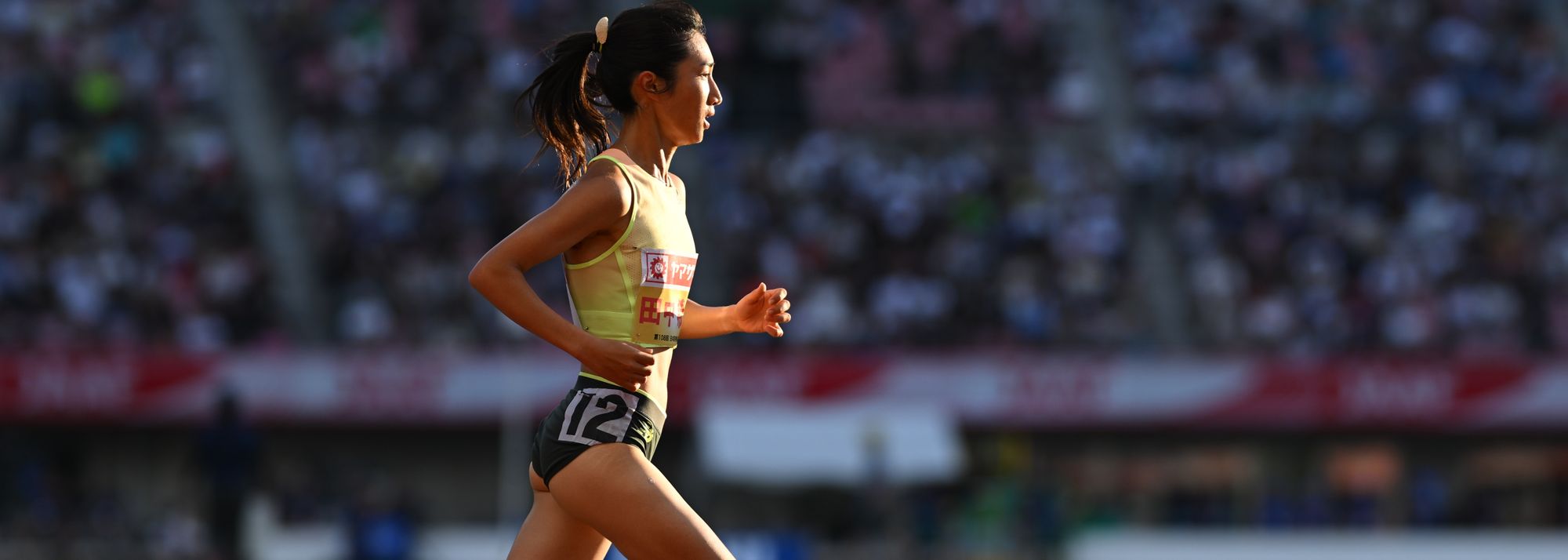Nozomi Tanaka competes in the Women's 5000m Final day three of the 108th JAAF Athletics Championships (© Getty Images)
Nozomi Tanaka, Athletics – Confronting oneself, seeking the “joy” and “strength” of running. Towards becoming top athletes who can compete on the world stage.
Originally written on 18 AUG. 2023
Nozomi Tanaka competed in the women's 1500m track and field event at the Tokyo 2020 Olympic Games in 2021 and finished in 8th place against world-class competitors. Since then, she has been steadily improving her strength, and her performance has attracted the attention of many people who feel that she is on the verge of rising to the world's top level. We asked Tanaka, who is also expected to perform well at the Tokyo 2025 World Championships in Athletics, about her thoughts on competition and what she likes to do in her daily life.
Nozomi Tanaka
Born in Hyogo Prefecture in 1999. After graduating from Doshisha University, they worked at Toyota Industries Corporation before transitioning to become a professional athlete in April 2023. They hold Japanese records in the 1000m, 1500m,3000m, and 5000m events. They competed in the women’s 1500m at the Tokyo 2020 Olympics, achieving the first-ever finals appearance by a Japanese athlete and finishing in 8th place.
I want to become an athlete who can embrace both the joy of running and the intensity of competition.
— When did you start running, Tanaka-san?
Because both of my parents were runners, I had been participating in various “parent-child marathons” since I was very young. But I started relatively late (laughs). Even in the “parent-child marathons,” they would rank participants, so enthusiastic parents would aim for victory with their children. However, my parents and I didn’t take it too seriously. They would wait for me if I got tired, or carry me until I recovered. We had fun running together. At events organized by my father, when I wasn’t running, I would play around the event headquarters and observe the staff working. Over time, I got to know more people, and they would call me “Kimi-chan” and show me affection. It was enjoyable.
— So, you were running without a competitive mindset in your early years. Was there a point when you began to consciously think about running as a sport?
My hometown in Hyogo Prefecture has a high level of track and field athletics, and many of the children participating in the kids’ division were from running clubs. It was tough to win against them. Gradually, I managed to get into a position where I could compete for medals. When I won a road race in the winter of my fifth year of elementary school, I was overjoyed. Later, in the summer of my sixth year, the day after my mother participated in a marathon event in Australia, I won in the kids’ division. Winning overseas became a significant source of confidence. Simultaneously, once I won, the desire to keep winning emerged, and the aspiration to run faster grew stronger.
Read more Move to the website of TOKYO FORWARD 2025 (External link) ©TMG.


















